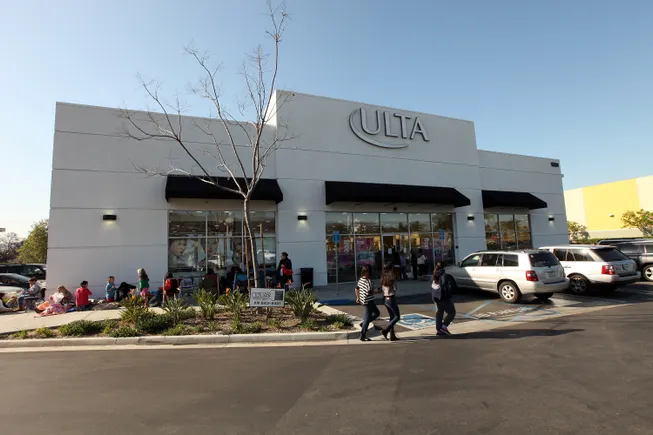Listen to the article
Cosmetic giants are moving forward with AI plans this year against a challenging backdrop of shifting consumer spending patterns and evolving global trade policies.
Three of the industry’s largest players, The Estée Lauder Companies, Coty and Ulta Beauty, are exploring how the technology can save costs, tailor communications and optimize forecasts amid the volatility.
“How are we prepared, as you’re saying, to cope with the current business needs?” Roberto Canevari, ELC’s EVP and chief value chain officer, said in response to an analyst’s question during a conference Tuesday. “There is a lot ahead of us. AI is bringing a lot of opportunities, but I personally feel we are in a very solid place.”
The beauty brand, which includes Clinique, Mac and Too Faced, is using AI to modify communications for specific regions, such as India and France. The technology will speed up the process, Canevari said.
AI is also helping the company decide what product goes where.
“The AI version that we’re working on is looking at what is happening around the world and where is better,” Canevari said. “The more we do it, the more it will become accurate.”
ELC is doubling down on AI under new leadership. The company appointed Brian Franz as its chief technology, data and analytics officer in April, marking the first time all tech-related functions have been consolidated under a single leader as it pursues stronger alignment.
“By bringing these critical areas together under one leader, we are simplifying our structure, removing operational silos and creating stronger alignment across our data and technology strategies,” CEO Stéphane de La Faverie said in the announcement of his first external appointment to the executive leadership team since rising to its helm in October.
The previous regime had ramped up AI efforts in recent years, aiming to bring the technology to the forefront of the industry. In November, employees had access to more than 240 customized GPTs that could analyze datasets or synthesize vendor details, among other tasks, as part of a partnership with OpenAI. More recently, ELC created an agent in partnership with Microsoft to help employees market and develop products by analyzing archives and company data.
The progress on AI coincides with ELC’s broader strategic initiative called Beauty Reimagined, which prioritizes efforts that restore sales growth and enable agility.
In May, the company reported a net sales decline of 10% to $3.6 billion during its Q3 2025.
McKinsey recommended beauty brands focus on high-value AI use cases and customizable tools to accelerate impact, in a January report. Potentially valuable back-end use cases included automated sales pitch prep, training exercises, internal search, demand planning and post-call transcription.
Beauty brands are pursuing AI with a number of applications in mind. L’Oréal, one of the industry’s biggest players, is collaborating with IBM to develop an AI model to help develop product formulas that meet sustainability goals, the companies said in January.
Unleashing cost savings
Similar to ELC, Ulta is going through its own realignment while ramping up AI projects. The company’s plan, dubbed Ulta Beauty Unleashed, centers on driving core business growth, scaling accretive businesses and realigning its foundation for the future.
“Our teams are adapting well to our new ways of working, and we are steadily advancing our optimization efforts,” CEO and President Kecia Steelman said last week during the company’s Q1 2025 earnings call. “During the quarter, we leveraged new AI and machine learning capabilities to drive supply chain efficiencies and launched scheduling and enhanced payroll management tools to optimize our efforts and support our cost-saving goals.”
The company’s CEO took on the role shortly after the new year and laid out the Unleashed plan in March. Steelman changed former Chief Technology and Information Officer Mike Maresca’s title to chief technology and transformation officer in January, a move she described as aligning transformation efforts with cost optimization initiatives.
“I’m very confident that, under his leadership … he’s bringing it all together in a way that we can really understand our CapEx and our OpEx spend, and making sure that we’re getting our ROI and getting the value realized out of these investments,” Steelman said during an April investor conference, referring to Maresca.
Ulta, which has around 1,450 retail stores across the U.S., increased its AI use following a three-year investment period in foundational systems. An ERP overhaul brought operational challenges last year, requiring teams to make process adaptations. The company also ditched a legacy store platform and point-of-sale system and made inroads in data management.
“We didn’t have really good data governance around all of our data, which is a huge unlock if you can have clean data sources to leverage AI, generative AI in the future,” Steelman said in April.
Ulta saw net sales increase 4.5% to $2.8 billion during Q1 2025, though the company remained cautious about the rest of the year, Retail Dive reported last week.
Cosmetic giant Coty has embarked on the latest leg of a transformation initiative first laid out in fiscal year 2020 at the peak of COVID-19 disruptions, which aimed to boost margins and save costs.
One of the key pillars announced in April as part of the next phase of transformation is to streamline support functions. The company wants to add around $130 million of fixed cost savings to bring cumulative savings to around $1.2 billion since the program kicked off in 2021. AI is one of the levers Coty is using to reach its goal.
“Having this knowledge, the technology, leveraging AI in one hub, in that basically, we have a clear control tower on planning, and this will bring significant savings in terms of costs,” CEO Sue Nabi said in November.
The work to consolidate planning into one hub and enable AI is ongoing, executives said during the company’s Q3 2025 earnings call in May.
Coty, which includes CoverGirl, Kylie Cosmetics and Sally Hansen, blamed market uncertainty and foreign exchange headwinds for declining sales during the quarter.

